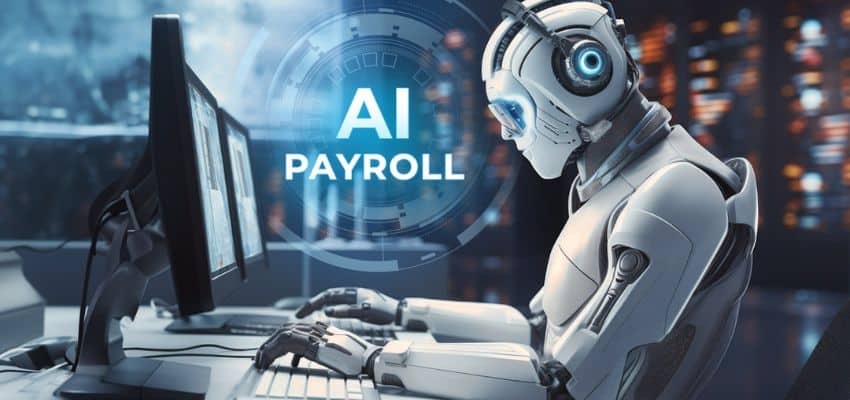The Role of AI in Payroll: Trends to Watch in 2025

In the fast-paced world of business, efficiency is paramount. The integration of AI in payroll processes has revolutionized how organizations manage their employee compensation and benefits. With its ability to streamline operations, reduce errors, and offer valuable insights, AI in payroll emerges as a game-changer for businesses looking to enhance operational efficiency.

Understanding the Role of AI in Payroll
The implementation of artificial intelligence in payroll systems represents a transformative shift in human resources management. Companies today are increasingly turning to AI technologies to automate routine tasks, analyze vast amounts of data, and improve accuracy in payroll processing.
The Evolution of Payroll Systems
Historically, payroll systems relied heavily on manual processes, which were often tedious and prone to errors. Time-consuming tasks such as calculating hours worked, applying tax deductions, and managing overtime could lead to discrepancies that affected employee satisfaction and compliance with regulations.
As technology progressed, payroll software emerged, introducing efficiencies that allowed companies to digitize their records and conduct calculations more efficiently. However, even these systems required human oversight and often fell short in areas like predictive analytics and real-time processing.
AI in payroll builds on this foundation by leveraging machine learning algorithms and data analytics to not only automate repetitive tasks but also derive intelligent insights from employee data. These advancements enable organizations to predict payroll-related issues before they arise and improve decision-making capabilities.
Key Benefits of Implementing AI in Payroll
The key benefits of integrating AI in payroll extend beyond mere automation. One major advantage is the reduction of human error, which can often lead to financial losses or compliance issues. By automating calculations and data entry, AI minimizes inaccuracies, ensuring timely and correct payments to employees.
Additionally, AI systems provide deeper insights into payroll data, allowing businesses to identify trends and optimize spending on labor costs. This predictive capability empowers organizations to make informed decisions about staffing, budgeting, and resource allocation.
Moreover, the use of AI in payroll helps enhance employee experience. Automated systems can facilitate quicker responses to inquiries regarding paychecks, benefits, and tax filings. Employees can access real-time information about their compensation, fostering transparency and trust between staff and administration.
The Future of Payroll Management
The future of payroll management will likely feature increasingly sophisticated AI solutions capable of handling complex regulatory requirements and diverse workforces. Machine learning models will continually improve, adapting to evolving labor laws and company policies while providing insights that drive strategic HR initiatives.
As companies embrace remote work and global employment, AI in payroll will play a crucial role in managing multi-currency transactions, compliance across jurisdictions, and the unique challenges presented by a geographically dispersed workforce.
In conclusion, the integration of AI in payroll is revolutionizing the way businesses manage compensation, compliance, and workforce planning. By automating routine processes, reducing errors, and providing valuable insights, AI empowers organizations to enhance efficiency, optimize costs, and improve the employee experience.
Best Practices for Integrating AI in Payroll
Integrating AI into payroll processes requires careful planning and consideration. Organizations must ensure they have the right tools, infrastructure, and talent to maximize the benefits of AI technology.
Assessing Current Payroll Processes
Before implementing AI, it is crucial for organizations to assess their current payroll processes thoroughly. Understanding existing workflows, bottlenecks, and pain points will help businesses identify where AI can provide the most value.
This assessment should involve gathering feedback from employees responsible for payroll processing. Their insights can highlight specific challenges or inefficiencies within the system, guiding the selection of AI tools that address these concerns effectively.
Furthermore, analyzing historical payroll data can reveal patterns that AI systems can leverage. By understanding past trends, organizations can better align their AI deployment strategy with desired outcomes.
Selecting the Right AI Tools
Choosing the right AI tools for payroll automation is essential for successful implementation. Organizations must consider various factors, including scalability, compatibility with existing systems, and user-friendliness.
There are numerous AI solutions available in the market, each designed to cater to different organizational needs. Some may specialize in automating payroll calculations, while others focus on advanced analytics or compliance management. It’s important to select a platform that aligns with the organization’s objectives and integrates seamlessly with other HR technologies.
Additionally, companies should prioritize tools that offer comprehensive support and training. Effective onboarding ensures that staff can leverage the full functionality of the AI solution, leading to smoother transitions and improved outcomes.
Ensuring Data Security and Compliance
With the integration of AI comes the responsibility of safeguarding sensitive employee data. Organizations must implement stringent security measures to protect against data breaches and unauthorized access.
Utilizing encryption techniques, secure cloud storage solutions, and robust access controls is crucial in maintaining the integrity of payroll data. Additionally, regular audits and compliance checks should be conducted to ensure adherence to local and international regulations related to data privacy.
AI in payroll must also comply with labor laws and tax regulations. Businesses should collaborate with legal experts to ensure that AI systems remain compliant with evolving requirements, mitigating the risk of penalties or legal disputes.
Training and Change Management
Successful AI integration in payroll requires a cultural shift within the organization. Employees must be adequately trained to understand and utilize AI in payroll technologies effectively.
Change management involves communicating the benefits of AI in payroll to stakeholders, addressing concerns regarding job displacement, and encouraging a mindset that embraces innovation. Providing ongoing training sessions, workshops, and resources can empower employees to adapt to new systems confidently.
Furthermore, it is vital to establish a feedback loop, allowing employees to voice concerns, share experiences, and suggest improvements. This collaborative approach fosters a sense of ownership and encourages employees to engage fully with AI in payroll technologies.
Integrating AI in payroll is a strategic move that can drive efficiency, accuracy, and compliance in payroll management. However, successful implementation requires thorough planning, the right technology selection, and a strong focus on data security and compliance.
By assessing current payroll processes, selecting AI tools that align with business objectives, and ensuring proper training and change management, organizations can maximize the benefits of AI-driven payroll systems. Additionally, maintaining a culture of continuous improvement through feedback loops and regular audits will help businesses adapt to evolving challenges and regulatory requirements.
Measuring Success and Continuous Improvement
Implementing AI in payroll is not a one-time effort but rather an ongoing process that requires constant evaluation and improvement.
Defining Key Performance Indicators (KPIs)
To measure the success of AI integration in payroll, organizations must define clear KPIs that align with their goals. Relevant metrics may include:
- Reduction in payroll processing time
- Decrease in errors and discrepancies
- Improvement in employee satisfaction rates related to payroll inquiries
- Cost savings achieved through automation
By establishing measurable goals, organizations can assess the effectiveness of AI solutions and identify areas for further enhancement.
Gathering Employee Feedback
Employee feedback is invaluable in gauging the impact of AI on payroll processes. Conducting surveys and interviews can provide insights into how well the new system is performing and whether it meets employee expectations.
Listening to employees also demonstrates that their experiences matter. Addressing any concerns or challenges they face with the AI system can lead to meaningful adjustments that improve overall satisfaction and engagement.
Staying Abreast of Technological Advances
The technological landscape is continually evolving, and organizations must stay informed about emerging trends and innovations in AI. Regularly assessing the latest developments in AI in payroll allows businesses to identify opportunities for further optimization or enhancements to their payroll processes.
Networking with industry experts and participating in relevant conferences or workshops can provide valuable insights into cutting-edge AI in payroll practices and tools that can be implemented in payroll management.
Encouraging a Culture of Innovation
Creating a culture that encourages innovation is critical for successful long-term adoption of AI in payroll. Organizations should empower teams to brainstorm and experiment with new ideas, fostering an environment where continuous improvement is valued.
Celebrating successes and sharing best practices can motivate employees to embrace AI technologies and contribute to enhanced efficiency and productivity across the payroll function.
Conclusion
The integration of AI in payroll is transforming the way organizations approach compensation management. By automating repetitive tasks, reducing errors, and providing valuable insights, AI enhances efficiency and contributes to a more responsive and agile payroll process.

